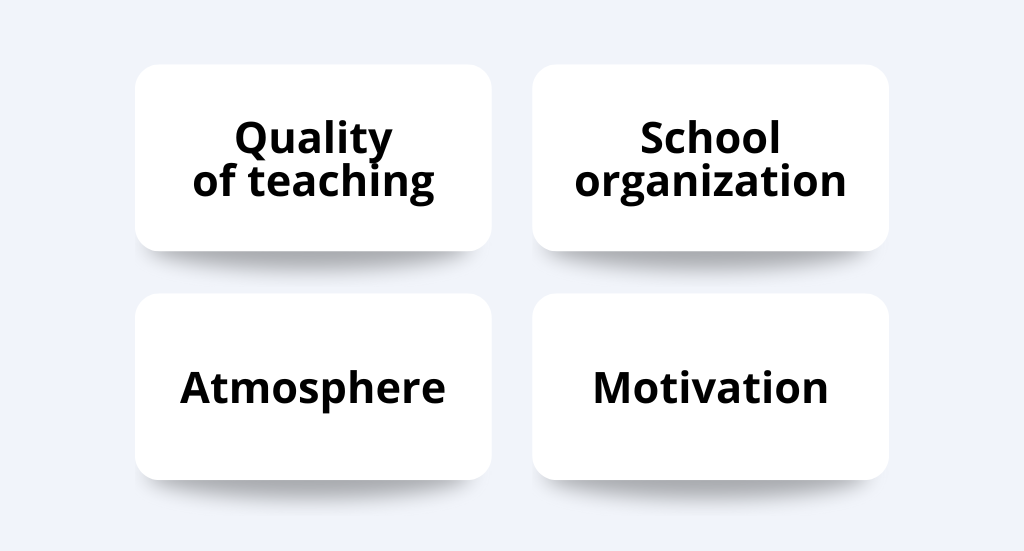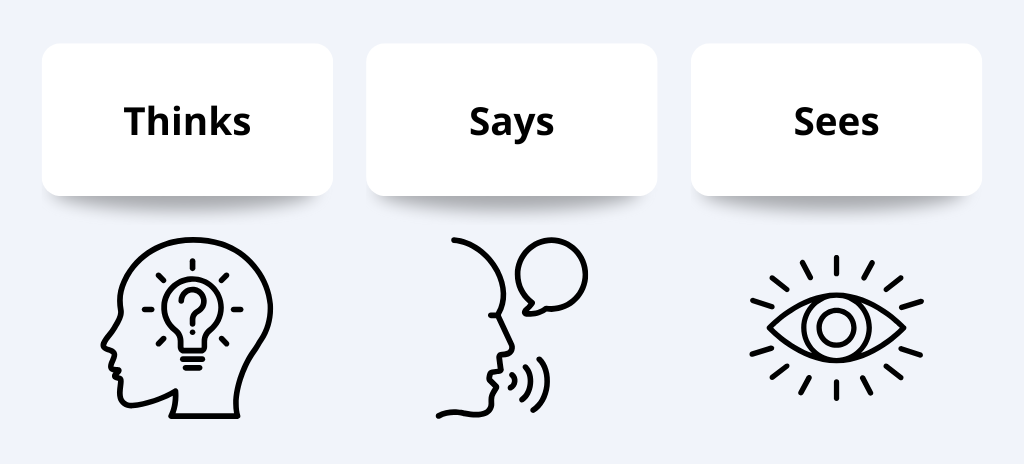
Customer satisfaction is a key element of success for any language school. Satisfied students not only continue their education but also recommend the school to friends, which contributes to business growth. But are your students truly happy with the classes? Would they recommend your school to their friends?
Today, you will learn how to effectively measure and improve customer satisfaction in a language school. You will discover proven methods for monitoring course quality, implementing improvements, and building long-lasting relationships with students.
What will you find in this article?
- Why is surveying students’ opinions the key to higher sales?
- What influences a student’s decision to continue?
- How to measure customer satisfaction in a language school?
- How to improve customer satisfaction in a language school?
- How to use feedback to increase course sales?
- Summary – how to improve customer satisfaction in a language school?
Why is surveying students’ opinions the key to higher sales?
People interpret their emotions based on their behavior – this is known as the Declaration Effect (Self-Perception Theory, Bem, 1972). If a student says or writes in a survey that they were satisfied with the course, they believe it even more, increasing the likelihood that they will take action, such as enrolling for the next semester.
Research shows that:
- Users who regularly see their progress and are informed about their results have 14% higher retention than those who do not receive feedback (Duolingo research).
- Harvard Business Review found that companies actively engaging customers in feedback and adapting their services to their opinions increase retention by 10-15%.
What influences a student’s decision to continue?
Based on our over a decade of experience and conversations with language school owners, we have identified four key factors.

- Quality of teaching – a student must see their progress to continue learning. If they can’t use new vocabulary, they lose motivation and give up.
- School organization – communication should be quick and simple. Problems with rescheduling classes discourage further learning.
- Atmosphere – students need to feel comfortable in the group. If they feel good during classes, they will continue attending because of the instructor, other students, or the overall atmosphere during the sessions.
- Motivation – students need to see their progress. Schools that show students their results have higher retention rates.
Myth: price is the main reason for dropping out!
The most common reason for dropping out is not the price! Students leave when they don’t see value in learning. Consciously or not, we do this in our daily lives.
- Students choose better quality even at a higher price – much like we choose more expensive, higher-quality coffee.
- More important than price is the sense of value – if a student sees results, they don’t quit. It’s like choosing a hairstylist who creates a hairstyle that lasts the entire event, not just the first two hours. We pay more but receive tangible value.
How to measure customer satisfaction in a language school?
1. Surveys
A survey should be well thought out: in terms of content, format, and structure. At the very beginning, think carefully about what you want to investigate to ensure the survey is as short as possible, with clear and precise questions.
Avoid asking about general feelings of the students. Instead of asking, “Does the instructor explain students’ doubts well?” pose the question, “How do you rate the instructor’s ability to explain students’ doubts?”.
Additionally, propose answers that make it easier but do not suggest anything to the students. You can do it like this:
Do you think the instructor explains the discussed material well?
1 – definitely not
2 – probably not
3 – probably yes
4 – definitely yes
We have made a separate article about surveys. If you want to delve into this topic, read the article: how to use surveys in language schools!
2. Net Promoter Score (NPS)
NPS allows you to measure customer loyalty using just one simple question.
“How likely is it that you would recommend our language school to a friend?”
The results are divided into 3 groups. According to them, students are categorized as:
- Promoters (9-10) – loyal customers.
- Neutrals (7-8) – satisfied but not very loyal.
- Detractors (0-6) – dissatisfied individuals.
NPS not only indicates how satisfied customers are but also predicts their future behaviors. If it is low, it suggests that there are issues in the school that need to be addressed.
On the other hand, a high NPS indicates a greater chance of:
- repeat enrollments for courses,
- referrals,
- positive reviews, which help attract new students.
Learn more about this indicator by reading our post: NPS: how to survey customer satisfaction with a single indicator!
3. Social proof – the power of reviews and case studies
Nothing captures the imagination of potential students quite like real stories of individuals. Therefore, it’s worth regularly collecting and publishing case studies. These stories can be presented in the form of posts, blog articles, videos, podcasts – the more authentic and detailed they are, the stronger their impact.
You can showcase how students overcame the barrier of speaking; a student who was afraid to speak but traveled abroad and now converses freely; a student who prepared for a language exam and achieved an excellent score.
Good to know!
✔︎ Student success stories are the most effective marketing tool.
✔︎ Publishing reviews – use Google, social media, and your website.
✔︎ Encouraging feedback – for example, through a discount system or bonuses.
How to improve customer satisfaction in a language school?
If we’ve already measured customer satisfaction in the language school, the next step should be to analyze the collected information. Thanks to this, we know which elements to improve, what to focus on, what to change or add to our processes.
Additionally, psychology gives us a clear answer that satisfaction is one thing, but awareness of that satisfaction is something entirely different.
- If a student thinks about their progress – they appreciate it more.
- If a student says out loud that they enjoyed it – they believe it more.
- If a student sees that others are praising the course – they are more likely to enroll again.
This is a mechanism that strengthens student satisfaction on multiple levels.

How to use feedback to increase course sales?
1. Creating success stories
- Showcasing student progress encourages others to enroll.
- Publish case studies in blog posts, social media, videos.
2. Promoting student reviews
- Regularly publishing reviews on social media builds trust.
- Create a series of posts titled „Students About Us” with quotes from reviews.
- Develop a subpage with student reviews on the language school’s website.
3. Utilizing feedback in sales
- If a student indicates in a survey that they are satisfied, contact them and suggest continuing the course.
- Offer bonuses and discounts for renewal – additional materials, premium sessions.
- If there are many opinions about what students are dissatisfied with, you can focus first on improving that element.
4. Referral program
- Offer a discount for referring a new student.
- Create a program that encourages multiple referrals.
- Set clear and simple rules.
Summary – how to improve customer satisfaction in a language school?
To increase customer satisfaction in a language school, it’s worth implementing a few key actions.
Regularly conducting satisfaction surveys after each semester will allow you to gather valuable feedback. It’s also important to show students their progress—this can be done through summary tests, achievement reports, and positive feedback from instructors. Building social proof can attract new clients and strengthen trust in the school.
And if you want to explore this topic even further, be sure to read the post: how to gain student loyalty at a language school!
